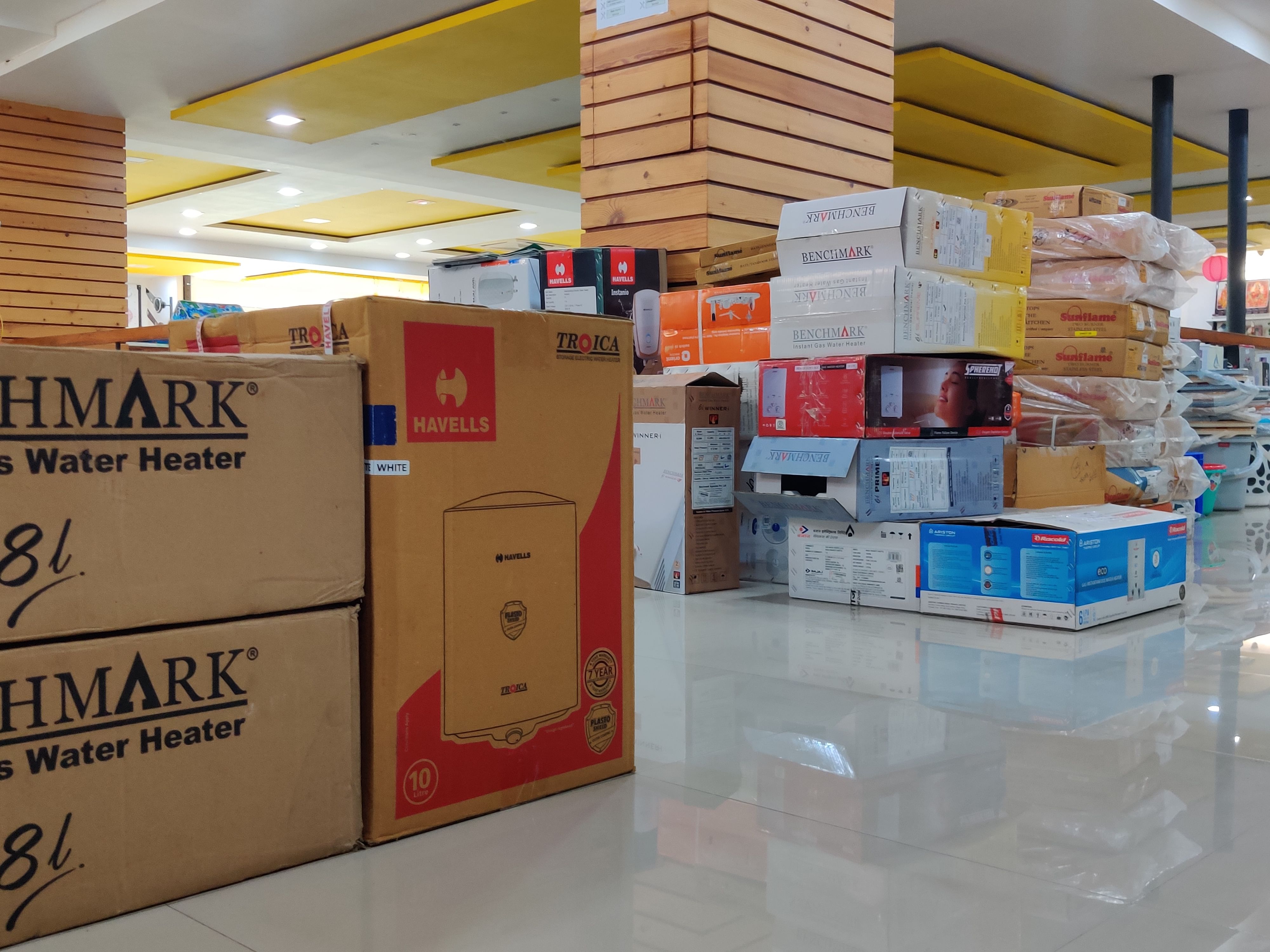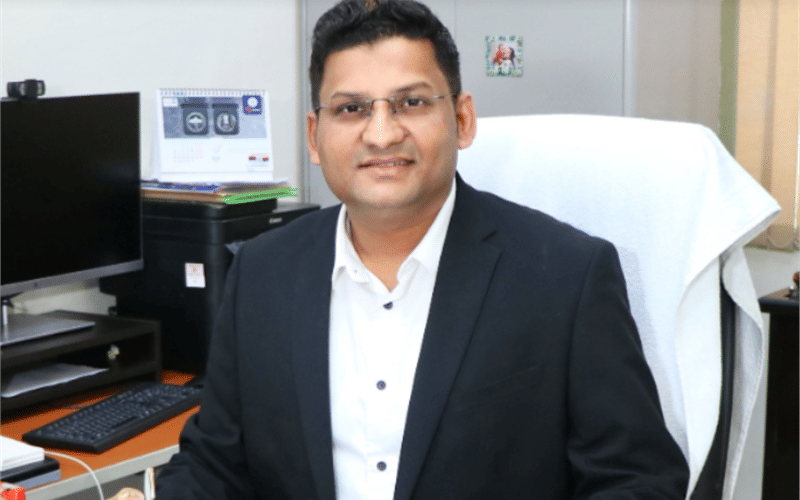Kirtiraj Gaikwad and the future of packaging education ...
Is the industry sufficiently prepared for a high growth future? Kirtiraj Gaikwad, professor at the packaging and paper technology department at IIT Roorkee points out to key trends that we must be paying more attention to
18 Oct 2023 | By Disha Chakraborty
Disha Chakraborty (DC): As an educator in the field of packaging, what have been the problems you have faced?
Kirtiraj Gaikwad (KG): Lack of updated curriculum. Staying current with rapidly evolving technology and industry trends can be challenging. Secondly, keeping students engaged in practical learning and hands-on experience. Thirdly, employability, ensuring that students are job-ready with relevant skills upon graduation.
DC: How do you think these obstacles could be tackled creatively?
KG: Encourage educators to attend workshops, seminars, and online courses to stay updated. Secondly, foster partnerships with print and packaging companies for internships and real-world projects. And Integrate more hands-on projects and real-world problem-solving into the curriculum.
DC: Which is your favourite subject, and why is it important?
KG: Food packaging, the study of food packaging is indeed a favorite subject for many, as it encompasses science, technology, design, sustainability, and practicality. Understanding the importance of food packaging is crucial not only for those who work in the industry but for consumers as well. It influences our daily lives, affecting the safety and quality of the food we eat and the choices we make as responsible consumers.
DC: Any trend you are detecting?
KG: The field of food packaging is continually evolving. Scientists and engineers are constantly developing new materials and technologies to improve the efficiency, safety, and sustainability of food packaging. From smart packaging that monitors freshness to edible packaging that reduces waste, there are exciting innovations in the pipeline.
DC: Today, you are a teacher. Who was your guru - and why so?
KG: I am in the field of packaging because of two people: one, Professor Rajeshwar Matche. He was a senior packaging scientist at the Central Food Technological Research Institute (CFTRI) in Mysore, and the other is Chakravarthi AVPS, the global ambassador of the World Packaging Organisation. Their work in the field of packaging is extraordinary; they inspire a number of students with their work in packaging technology, and I am one of them.
DC: One innovation you implemented after listening to your student?
KG: One innovation I implemented after listening to my students involved improving our curriculum to include more hands-on experience with cutting-edge food packaging technologies. In response to feedback from my students, I revamped the course structure to include more practical lab work and real-world case studies. This allowed students to gain a deeper understanding of the latest packaging materials, sustainability practices, and emerging technologies. Additionally, I incorporated student-led projects where they could apply their knowledge to address real packaging challenges faced by the food industry.
DC: If you were the minister of printing and packaging, how would you tackle the industry's problems creatively?
KG: First and foremost, I would prioritise sustainability. In today's world, environmental concerns are paramount, and the printing and packaging industry is no exception. I would encourage the development and adoption of eco-friendly materials and processes. This might include supporting research into biodegradable packaging materials, promoting the use of recycled paper, and incentivising businesses to reduce their carbon footprint by implementing energy-efficient practices. Furthermore, I would focus on digital transformation. The industry has already seen significant technological advancements, but there is room for more. By embracing automation, 3D printing, and other cutting-edge technologies, we can enhance efficiency and reduce costs. This would not only benefit large printing and packaging companies but also small businesses by making high-quality packaging more accessible.To foster innovation and collaboration, I would establish partnerships with educational institutions and research centres. Encouraging the exchange of knowledge and ideas between academia and the industry can lead to breakthroughs in design, materials, and sustainability. Lastly, I would work to streamline regulations and reduce bureaucratic red tape to facilitate the growth of the industry. By making it easier for businesses to operate and adapt to changing market demands, we can stimulate economic growth and job creation within the sector.
DC: What ingredient do you seek among your young disciples?
KG: The ingredient I seek among my young disciples, if you will, is a passion for learning, curiosity, and a willingness to explore and grow. I encourage them to be open-minded, to ask questions, and to be eager to acquire knowledge and experience. These qualities are essential for personal and intellectual development.
DC: An article/listing in which publication that impressed you?
KG: As a professor at IIT Roorkee, I am consistently on the lookout for publications that provide valuable insights and advancements in the field of packaging technology. One article that truly impressed me and has had a significant impact on my research and teaching is the Sustainable Food Packaging: Current Trends and Future Prospects. This was published in the Journal of Food Science in 2020. The article provided a comprehensive overview of the latest trends in sustainable food packaging, which is a crucial and ever-evolving aspect of our field. It discussed various innovations, materials, and technologies that are environmentally friendly, including biodegradable packaging, intelligent packaging systems, and reduced material waste strategies. The authors presented a balanced perspective, highlighting the benefits and challenges associated with each approach and offering insights into potential future developments.
DC: Your present preoccupation in the field of research?
KG: As a packaging professor at IIT Roorkee, my current preoccupation in the field of research revolves around advancing the state of knowledge and technology in food packaging. Food packaging is a critical aspect of the food industry, as it not only ensures the preservation and protection of food products but also plays a significant role in food safety, sustainability, and consumer satisfaction. My research focuses on several key areas: sustainable packaging, food safety and preservation, barrier materials, packaging innovation, regulatory compliance, food waste reduction
DC: Very impressive. What are your endeavours driven by?
KG: My research endeavours are driven by the dual goals of improving food packaging efficiency and sustainability while ensuring the safety and satisfaction of consumers. By addressing these critical aspects of food packaging, I aim to contribute to the advancement of the food industry and the global effort towards a more sustainable and secure food supply chain.
DC: One project which you are excited about?
KG: I am working on a space food packaging project. I have several reasons to be excited about this work. Some of the key factors that make these projects intriguing and motivating: the excitement for me in space food packaging projects stems from the opportunity to push the boundaries of technology, collaborate with experts from various fields, contribute to space exploration, and make a real impact on the safety and well-being of astronauts. The multidisciplinary nature of the work, the innovation it requires, and the potential for broader applications on Earth make it a thrilling and fulfilling field of research.
DC: Assuming you can align with a print or packaging association what would be the three most important things you would expect from it?
KG: Three things. The unavailability of resources; the unavailability of funds for R&D; the unavailability of qualified technical support.
Kirtiraj Gaikwad: The USP (Unique Selling Proposition) of the print and packaging industry in India
The print and packaging industry in India has experienced significant growth and transformation over the years, with several unique selling points (USPs) that make it a dynamic and promising sector.
India is one of the world's fastest-growing consumer markets. The diversity in culture, languages, and regions creates a vast array of market opportunities for the print and packaging industry. Businesses can cater to a wide range of industries, including food and beverages, pharmaceuticals, textiles, electronics, and more. Then there is cost-effective labour. India is known for its skilled and cost-effective labour force. The availability of a large pool of skilled workers, including graphic designers, printers, and packaging experts, makes it a cost-effective destination for printing and packaging services. This allows businesses to offer competitive prices while maintaining high-quality standards.
The booming eCommerce industry in India has created a substantial demand for packaging materials. With the rise of online shopping, there is a growing need for innovative and sustainable packaging solutions. This provides a significant growth opportunity for the print and packaging industry. Also I am noticing Indian companies are investing in modern printing and packaging technologies. Digital printing, offset printing, and various advanced packaging techniques are being adopted to meet the evolving demands of the market. This focus on innovation ensures that the industry remains competitive and adaptable.
As sustainability gains importance globally, the print and packaging industry in India is embracing eco-friendly practices. Many companies are shifting towards recyclable and biodegradable materials, reducing waste, and implementing environmentally responsible printing and production processes. This commitment to sustainability is a unique selling point, especially in export markets.
The Indian government has launched initiatives like "Make in India" and "Digital India" to promote domestic manufacturing and digitalisation. These initiatives have created favorable conditions for the print and packaging industry, encouraging investments, growth, and global competitiveness.

Today, Indian consumers are seeking personalised and unique packaging solutions. The industry has responded by offering customisable packaging options, catering to the individual needs of businesses and customers. This trend is contributing to the industry's growth. In addition, there is greater emphasis on quality standards. Today, India has adopted international quality standards and certifications in the print and packaging sector. This commitment to quality ensures that products meet global standards, making Indian packaging solutions suitable for export markets.
The Indian print and packaging industry has significant export potential. The competitive pricing, quality standards, and a broad range of packaging options make Indian products appealing to international markets. This export potential can be a crucial USP for companies looking to expand their global footprint.
India must leverage our skilled workforce. India has a large pool of skilled professionals in design, pre-press, and printing operations. This highly skilled workforce is essential for delivering high-quality products and services, making the industry stand out on a global scale. The point is, the print and packaging Industry in India boasts a unique combination of factors that contribute to its growth and potential. With a diverse market, cost-effective labour, technological innovation, sustainability initiatives, and a commitment to quality, this industry is well-positioned to continue its upward trajectory and play a significant role in both the domestic and international markets.


